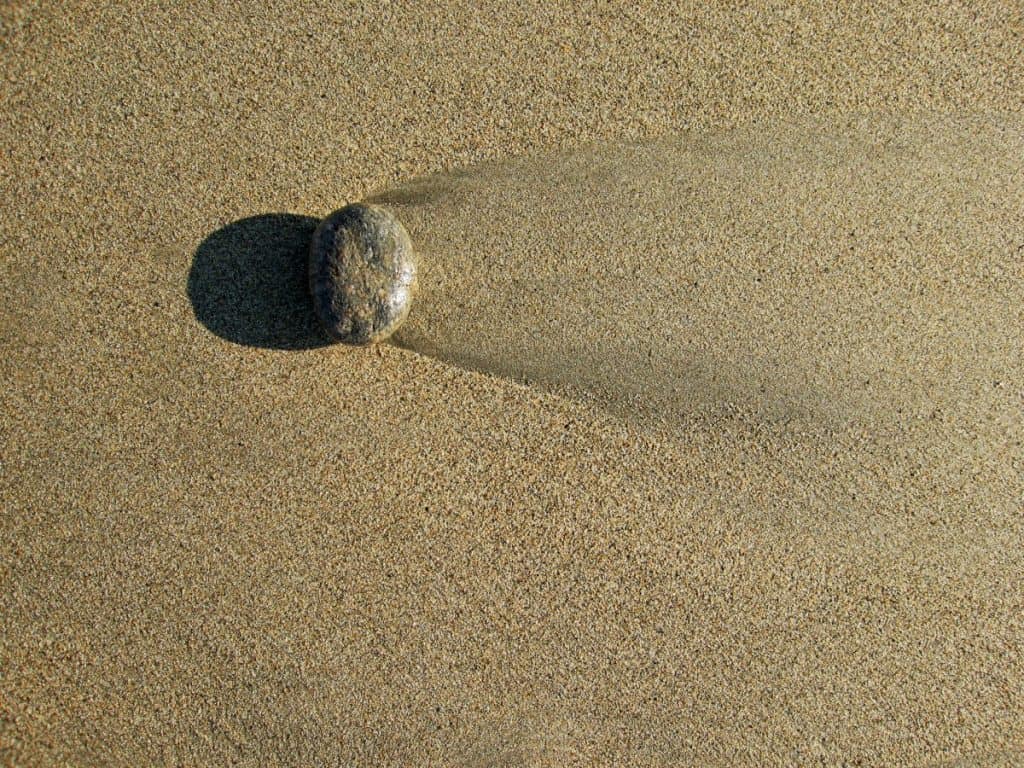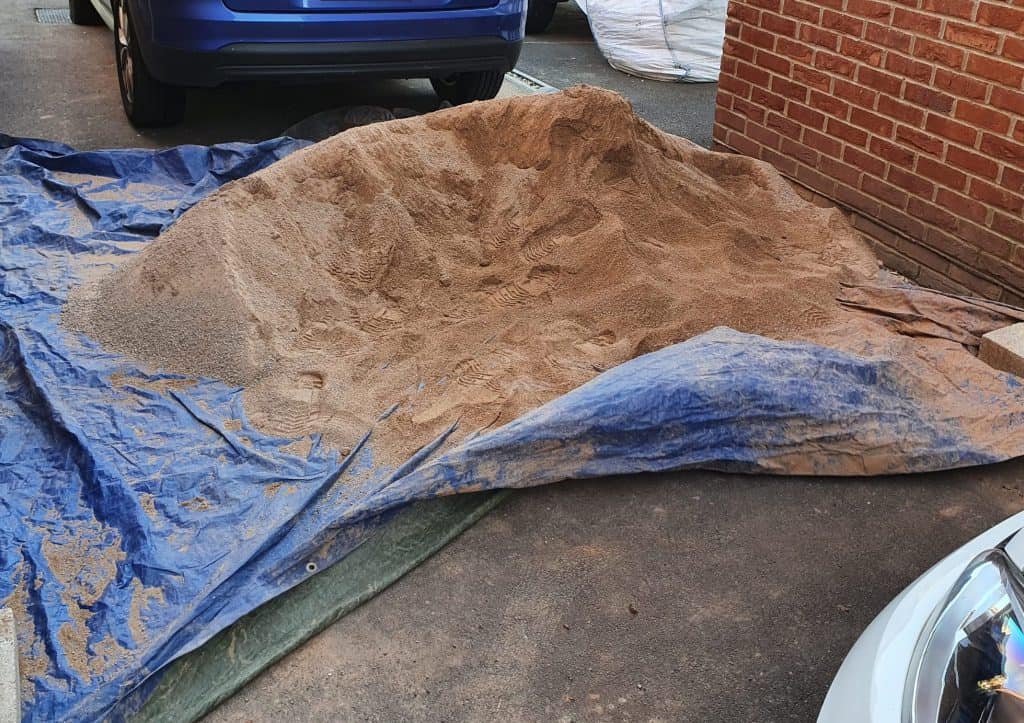One of the most useful objects for construction and plants alike is sand. The proper sand type can hold buildings straight, boost plant life, and improve drainage. In cities, one of the best materials for drainage is sand. The light and coarse texture helps water seep through via capillary action quickly and therefore prevents landscaping problems.
Using the right sand and soil mix for a gardening effort is crucial to help ensure success in your gardening ventures – especially for grass. Without sand, your garden might not do so well. So, a question arises; why not use just sand for your garden? Why shouldn’t you use sand for drainage?
The finer the sand is, the worse it will be for your plants. While sand has a lot of space between grains and therefore allows for good drainage, unfortunately the drainage is a bit too good. Sand doesn’t retain enough water to be able to sustain plants other than perhaps cacti. If you’ve added a mix, sand minimizes airflow and ends up clogging your pot, effectively turning compost into a drain stopper.
How Much Sand Is Too Much for Drainage?

Sand has a way of packing up mixes and thus reducing airflow, as mentioned above. These sand clogs often end up retaining too much moisture, effectively blocking air around the roots and leading to rot. Find sand causes worse clogs than where particles are larger, because finer sand compacts as water moves through it much more tightly than coarser sand does.
We mentioned in our article on topsoil that topsoil doesn’t need to be compacted because if you do that, you are restricting root movement and therefore impeding growth. It is below the 1/8th inch mark that things start to get better, but at that point, it’s not really sand anymore. As you go beyond the 1/8th inch mark, you’ll find that the mix you added is there.
Adding sand in bed drains isn’t such a bad idea, considering you aren’t planning to plant seeds (or seedlings) in it. However, using too much sand for drainage in pots is a disaster waiting to happen.
Having said that, grass and other creeping plants such as mint, Breckland thyme (wild thyme) can grow in sand with a bit of mix under it, since their roots don’t run that deep. However, you are going to grow much more than just grass in your lawn, which is why it is important to consider the sand you’re adding to your lawn.
Reasons for Using Sand in Topsoil
There are many reasons why sand is used in topsoil, with the prime focus being on drainage. There is no denying that sand doesn’t retain much moisture, but it is equally important to remember that if you’re using finer sand for drainage, chances are that you’ll likely end up with some of the sand draining along with water as well.
Beach Sand
Beach sand is a prime example of how finer sand moves with water and why it’s not such a great idea to use it. Particle sizes of this sand range from 0.0625 mm (1/16th of a millimeter) to 0.0755 mm.
Concrete Sand
Concrete sand, on the other hand, is a much coarser alternative. Its particle sizes range from 0.30 mm to 2 mm and can therefore hold its position even when used for drainage. This type of soil is a good choice for a mix where drainage is important, or when installing a sceptic system.
We recommend using a concrete sand mix to improve drainage. If you have clay soil, add a 1-inch concrete sand layer to the surface of your garden and work the mix at least 6 inches deep. Remember to add mulch and compost as well.
Masonry Sand/Aggregate

Masonry sand is one of the most common types of aggregates used with concrete because of its relatively larger particle sizes. This is a medium-coarse sand with particles ranging from 0.6 mm to 0.8 mm. In construction, this soil usually finds use when installing pavers or filling joints between pavers.
This is very permeable sand and therefore allows very good drainage. Unwashed masonry sand can create a compacted base for pavers, yet its angular granules allow water to drain through, regardless.
Having said that, the rather fast drainage of this type of sand often means that there is very little to no room for sand to stand still, and therefore, drains out too quickly for your garden to make good use of water.
It is important that you avoid using sand alone for drainage – but if you must, we recommend you use filtered sand that doesn’t contain a very broad range of particle sizes. Consistency is important. Particles must be large enough to create drainage holes and retain air, all while being small enough to hold a little bit of water in them.
Stay as far away from fine sand as possible, though, if you’re looking to use sand for drainage.
Man-Made Sand Grains

For areas where very large sand particles are needed (mostly industrial work), man-made coarse sand comes into play. Coarse sand of this type ranges from 0.5 mm to 1 mm, while very coarse sand ranges from 1 mm to 2 mm. This type of sand is only suitable for carnivorous plants.
Sand is an important part of good soil, but too much or too little sand in your soil and you’ll most likely end up creating a hostile environment for your plants to grow in. Furthermore, if you’re using sand for drainage in your lawn, fine sand will only end up clogging your drainage systems again and again.
Choosing the Best Soil/Sand Combination for Your Plants
The best combination of sand and soil depends entirely on the plants you’re looking to plant; i.e., their native habitat and the type of sand present there. Of course, plants are often found growing in foreign sand types as well where conditions are less than favorable, but that doesn’t mean they are ‘thriving’ there. Just surviving.
Loamy soil is one of the most fertile soils out there, but it isn’t very good at draining water. This is why loam is naturally found in areas where there isn’t much rain. Loam is 4 parts sand, 4 parts silt, and 2 parts clay.
It might be fertile, but it won’t be able to grow different plants as you’d like it to. For that, you will need to improve its drainage. If you mix it with sand with a relatively larger particle size, you might be able to get better drainage and therefore grow other types of plants in it as well. However, this is a very painstaking task.
Some plants for which you will need good drainage include, but aren’t limited to:
- Pitcher plants. These are carnivorous plants that have a ‘pitcher’ on top of them to lure insects inside.
- Venus flytraps.
- Succulents. These plants require sandy potting soil with larger grains. These include aloe vera, jade plants, crown of thorns, cape aloe, and more.
- Hydroponics. These are plants that don’t require soil at all. The only use they have of sand is to anchor themselves, if need be.
